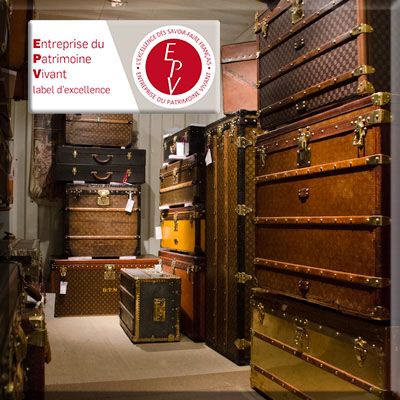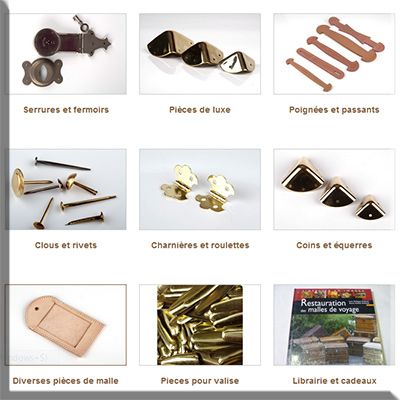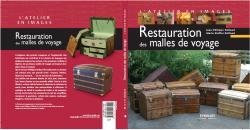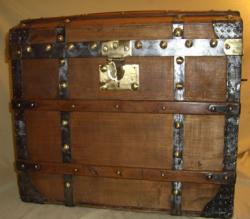"La malle" - the trunk.
The most ancient piece of furniture ? The word "malle" ("trunk", in french) dates from the 9th century, from High German, Malha or Malaha, and means bag. The trunk is the oldest and one of the few pieces of furniture from the Middle Ages. At the time, it served as a chair, a table, a trunk...
The trunks have existed ever since people started travelling. However, their production has accelerated during the development of rail transport in the 1870s. That's why you're more likely to find trunks that date back to that period or after.
There are 2 kinds of "shapes" :
the "bins" Flattop, built by carpenters small ax:
- the "huches"(in french), that are chests with a flat lid
- the "bahuts"(in french), that are trunks with a domed lid.
The manufacturing increased into the 30-40's, and it is only after war that the trunks more or less disappeared. The latest "trunkmakers" that exist are: Vuitton, Goyard, Ephtee and the trunk Bernard.
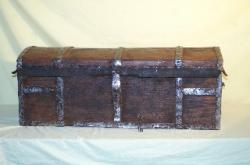
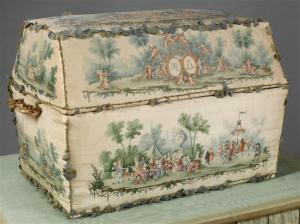
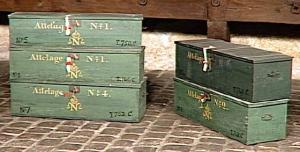
"La valise" - the suitcase
The word " valise" ( suitcase in french) has been used since the sixteenth century, but we do not know its origin for sure. It may be derived from the Italian valigia, which would refer to a bag, or a word that would mean "protect", since the bag is protecting its content.
"Layetier-emballeur" - packer
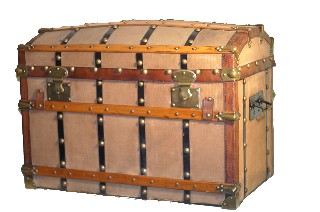
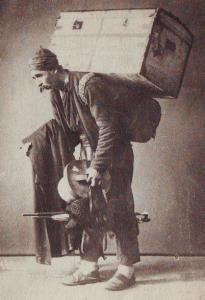
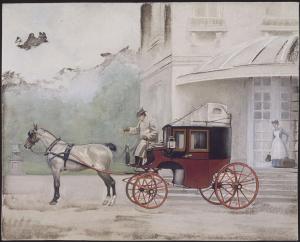
History of travels
Ancient Greece
Middle Ages
Renaissance
The eighteenth century
Until the middle of the 19th century
The industrial revolution and technological advances
The XXth century
New means of transport = new luggage
The train, the trunks and the suitcases
The steamer, the cabin trunk and the Wardrobe
The car (car trunk, trunk 48 h)
The plane and the hand luggage
Since 2008, we have a french book, published by Eyrolles.
This guide helps you for every step of the restoration of a trunk
You can order it by Fnac, Amazon, Eyrolles and on our website, of course.
Pour commander chez eyrolles .
SOMMAIRE DU GUIDE
DE RESTAURATION DES MALLES
-L'univers des malles
Leur histoire, les marques .
-Reconnaitre une malle
Les modèles , les usages
-Les outils et le matériel
-Anatomie d'une malle
Les parties, les pièces, les revètements
-Diagnostic-Précautions
-Déposer et reposer une étiquette
-Nettoyer en profondeur
-Traiter le bois
-Restaurer les éléments en bois
-Teinter, cirer, vernir ou peindre
-Traiter le cuir et ses imitations
-Les poignées (Cuir, métal)
-Nettoyer les ferrures - Remplacer un élément en métal
-Réparer une serrure
-Réparer une charnière
-Remplacer la toile extérieure
-Refaire l'intérieur
-Système de sécurité enfants
-Casier et tiroirs
-Malles commodes
-Malles armoire
-Aménager une malle
-Acheter une malle ancienne
-Fiche diagnostic vierge
-Bibilographie
-Patron de cintres et poignées
Below is a list of frequently asked questions in our visitors’ emails:
- May I come to see the trunk of my choice?
Of course, it's even better to come and see, touch, feel, compare on site.
You will see both the trunks of our exhibition (trunks of the "museum") and the trunks for sale.
If you have time and are interested, we will also show you the restoration workshops and answer your questions. We "open" our premises by appointment only, by email to This email address is being protected from spambots. You need JavaScript enabled to view it. specifying wished day and time for your visit, or by phone at 03.88.93.28.23 (answering machine in case of absence or too noisy workshop.
- Where are you located?
Our company is based in Haguenau in Alsace (Bas-Rhin), 25 km far from Strasbourg (4 hours from Paris by car and 2 hours by French TGV train). Once an appointment is fixed, we send you our address with detailed information to come up to here. Our workshop is at 5 rue St Exupery 67500 Haguenau. Find us on: Google Street View
- How is the transport of a trunk carried out?
Where do you dispatch? We dispatch worldwide. However the delivery prices mentioned on our website concern deliveries within metropolitan France only. The trunks are dispatched either via “Colissimo” with tracking and insurance or, for the largest ones, via DHL by land transport, with insurance too.
- What about the packing?
The trunks are wrapped in bubble wrap, then in kraft paper and then in double groove corrugated cardboard. See details here
- Are the trunks ancient?
The trunks we offer for sale all date from between 1800 and 1950. They all are antique travel trunks. When we perform a contemporary creation, we always specify it (and it shows!)
- How to make a restoration estimate?
Send us, by email This email address is being protected from spambots. You need JavaScript enabled to view it., the photos of the 6 sides and that of the interior, with the dimensions of your trunk, so that we can detail the estimate for its restoration.
- How long does a restoration take?
From the confirmation of your order and once your trunk arrives at the workshop, we can estimate the restoration work to be around 8 weeks.
- Are you restoring handbags?
No, our specialty is the restoration of old luggage, with a wooden barrel. The handbag is another market.
- Do you have workshops elsewhere than in Alsace?
Our job is too particular. We have in Haguenau a single storey space of 400m2 with several tons of spare parts (old and new). On the other hand, our carriers come to collect your trunk and bring it back to you, everywhere in the world.
"Question maison" on France 5 in December 2008
Our colection on france 2
MUSEUM OF LUGGAGE on CBS
Revue de presse ouverture du musee
Below you will find examples of the brand items and main characteristics.
We broach here ONLY brands that have bothered to sign their productions, differently than by putting a mere label.
A small ranking from 1 to 5 stars (*****) will help you to position these brands on the market in terms of reputation; as for the value itself of a trunk, it
LAVOLAILLE (Paris) (formerly Ets Katz) (**)
The Lavolaille's production is generally an entry-level one. Most often, you will find trunks from the first half of the 20th century covered with black coated canvas. Most of the Lavolaille trunks are built in the same way: poplar plywood in laminated layers glued together and covered with metal strips, with a coated canvas covering the whole. The handles are usually attached to vertical slats and not directly on the box. The bindings are either metal or brass..
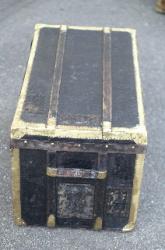
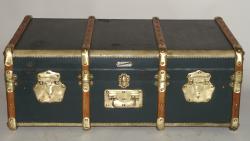

Main characteristics:
Glued coated canvas
Signed lock (possible but rather unusual)
Label made of sheet metal, paper or brass
No brand-specific canvas
Aux Etats Unis (Paris) (French brand) ( ***)
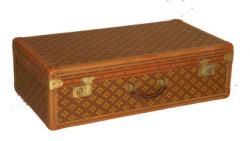
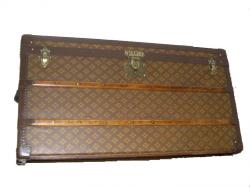
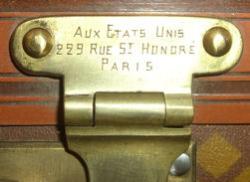
Main characteristics:
Main characteristics:
Coated canvas with monogram and motifs
Signed lock with address
The brand address (St Honoré Street) makes it a Goyard’s neighbor.
The family Bernard
The Bernard trunk – Jules Bernard – Les Ets Bernard (Paris) ( **)
See friendly links, because there are still nowadays 2 Bernard companies from the lineage of The Bernard trunk and Les Ets Bernard.
History:
De Jules à Éric BERNARD
Four generations of trunk-makers pass on to one another a hundred-year old box and trunk maker and packer know-how…
In 1906, Jules BERNARD (1876-1949), box and trunk maker and packer at Grand Magasin du Louvre, and his wife, paper-box maker in the same store, leave their jobs to purchase a box and trunk making and packing store at Aboukir Street 75 in Paris.
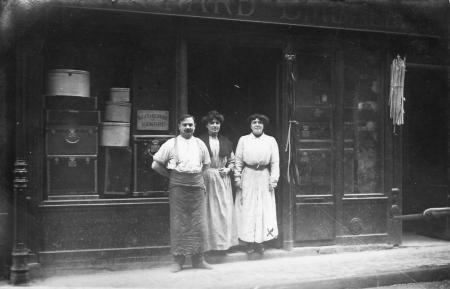
They make trunks and travel items and specialize in adapted baggage for commercial traveler.
In the 1930s, under the influence of his son Adrien, who works with his brothers in the family business, Jules Bernard creates a range of trunks for cars and registers the trademark La Malle Bernard.
In 1946, Adrien Bernard (1906-1971) hands the company to his brother Charles to settle Street of Jeuneurs,40, in Paris, in the former Quesnel factory specialized in fiber baggage making.
In 1971, Rémy Bernard succeeds to his father Adrien.
In 1976, he creates the BERNARD RDB factory in Bagnolet (Seine-Saint-Denis), specialized in the custom-making of cases and travel items, and in business baggage for commercial travelers, show-business, audiovisual trade and film industry.
Since 1994 he works with his son Eric, fourth generation of BERNARD trunk-makers. (see friendly link)
Moritz-Mäedler (Berlin) ( **)
Moritz-Mädler is a manufacturer from Leipzig and Berlin. Though very little known in France, the brand is a true luxury one.
Flat top trunk, bentwood banded trunk, wardrobe trunk, I have not seen yet a dome top trunk.
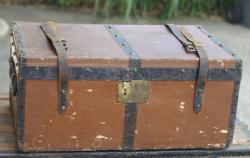
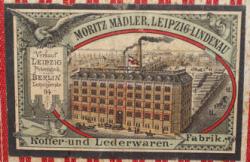
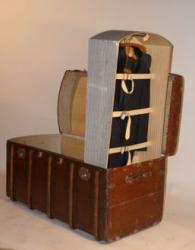
Main characteristics :
Monogrammed nails
Hallmark plate
Brass jewelry
Signed lock
Nice interior labels
No brand-specific canvas
Old England (France - Paris) ( ***)
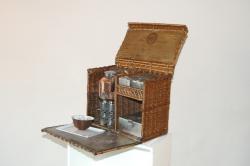
Main Characteristics:
Signed lock
Fine details
On some items, brass or leather labels complement authentication.
No brand-specific canvas
Au Départ (Paris) (also exists in Switzerland) ( **)
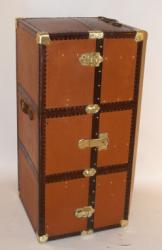
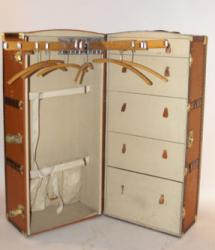
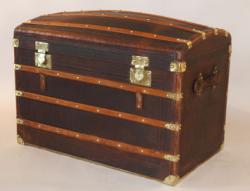
Main characteristics:
Lock sometimes signed
Nice labels
Several models
Dome top trunks often massive
No brand-specific canvas
Georges Paris ( **)
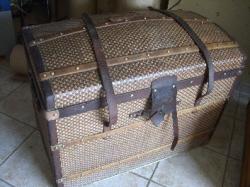
Main characteristics:
Signed lock
Damier canvas with shifted checks
De L’Hopital (in France, also exists in Switzerland) (*)
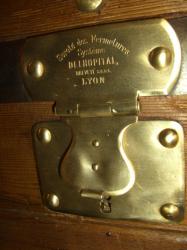
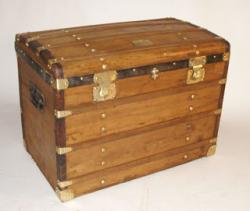
Main characteristics:
Signed lock
Plain canvas
Les magasins du louvre (France ) ( **)
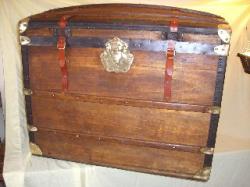
Main characteristics:
Signed lock with a lion topped with a capital L
The Magasins du Louvre at the heart of a counterfeiting case, first story of the kind!
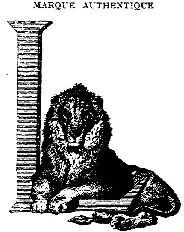
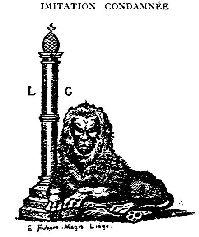
The counterfeit mark in this case is the emblem of the Grands Magasins du Louvre. Created in 1855 by Chauchard only three years after the opening of the Bon Marché, the Magasins du Louvre were one of the first Parisian department stores.
That temple of consumption has inspired Emile Zola for his novel "Au bonheur des dames" (whose title corresponds to the trade sign of a fictitious department store synthetizing GMdL and Bon Marché).
The Grands Magasins du Louvre closed their doors in 1974. At their peak, they were occupying the buildings of the present Louvre des Antiquaires, as well as a branch in Marengo Street, connected to the main establishment by an underground passage.
In this case, Chauchard and Co., that runs the Grands Magasins du Louvre, holds the trademark consisting of the graphics of a lion lying at the foot of a momumental letter L. They registered that trademark in France and also in Belgium (where it is only in 1971 when the Benelux Trademark Office took over from the national authorities).
The imitation to which they here have been faced with is cunning: the later mark consists in a lion sitting in the same posture at the foot of another monument, the top of the Perron in Liege.
(Sources: Frédéric Glaize, Blog des Marques)
Bazar du voyage / W.Walcker
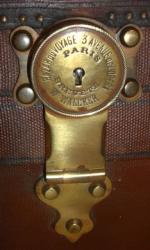
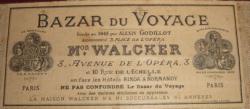
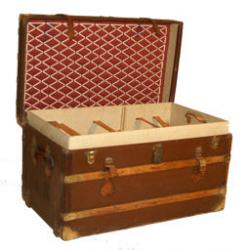
Walcker took over the activity of trunk-maker from Mr. Godillot.
Main characteristics:
Large central brass lock
On some antique dome top models, the brand hammered tapered square nails (bevel cut).
In 1900, there were more than 150 trunk-makers in France; each large town or region had its own specialists. I have gathered here some examples to show you how rich the production is, with even some local one, often unknown by the general public.
The trunk-makers of our region the Alsace
Sturm Strasbourg
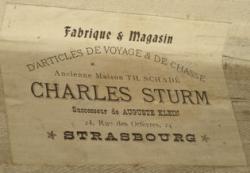
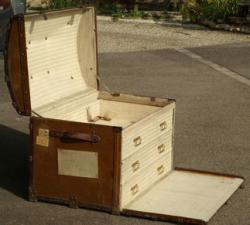
Klein
Kuhn
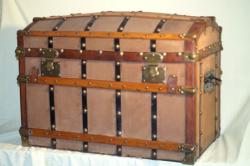
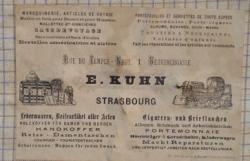
Foreign brands
Innovation
Prolific American brand, above all for wardrobe trunks
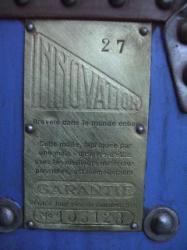
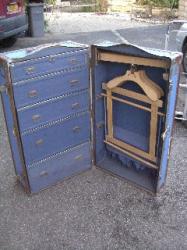
Main characteristics:
Innovation had a complete range of wardrobe trunks, from the entry-level models to the luxury ones.
Most often its trunks bore an identification plate with numbering (there is neither number nor plate on the oldest ones).
Innovation had a store on the Champs-Elysées in Paris, up to the sixties.
Oshkosh, luxury trunks, USA
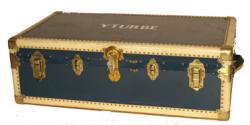
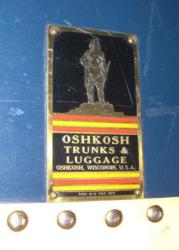
Main characteristics:
Well-known for its logo which represents an American Indian, the brand was long considered the American luxury.
These trunks, very sturdy, are often rather “simple”.
Neverbreak
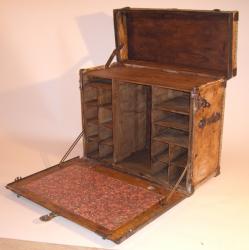
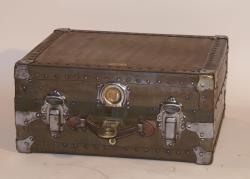
Main characteristics:
Provider for the American army, Neverbreak does not go in for subtleties.
The Neverbreak sturdy trunks, always bearing an important jewelry, are identifiable.
Bindings are always made of lozine.
Wood is most often period plywood.
Jewelry is made of white metal.
A plate Neverbreak is always affixed on one side of the trunk.
Moynat (1849-1976)
The most prolific of French luxury trunk brands, Moynat was relaunched in 2011. Situated in Paris, in Saint-Honoré Street, the 200m2 store presents some antique trunks and competes with Goyard and Hermes.
The brand, run by G. Davin, belongs to B. Arnault, via an investment fund since 2010.
At Moynat, no doubt, everyone finds what he is looking for! From the entry-level trunk for motorists, to the luxury leather briefcase, all aspects of luggage-making are studied.
Moynat has produced very high quality items, even absolute luxury.
The brand was a worthy competitor to Goyard and Vuitton.
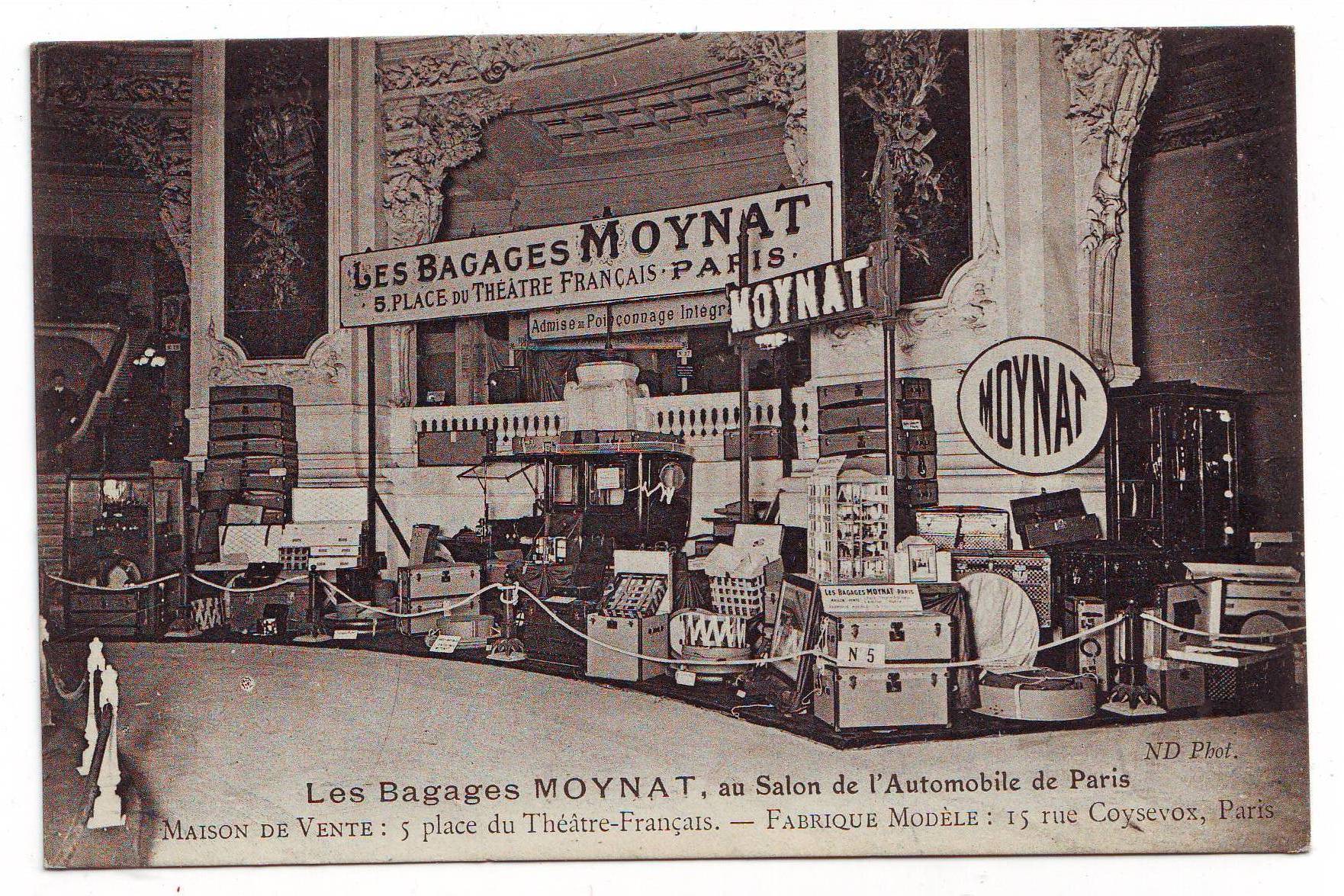
Moynat is a particularly imaginative brand for labels and hallmark plates.
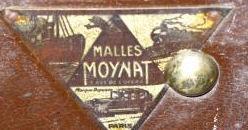 |
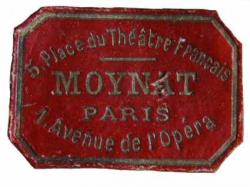 |
||
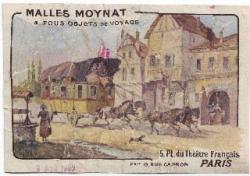 |
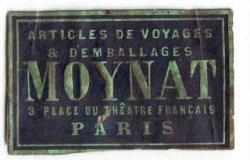 |
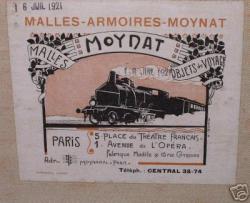 |
|
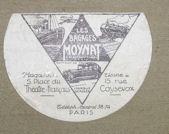 |
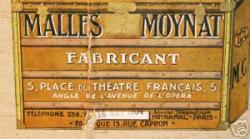 |
||
Steamer Moynat trunk
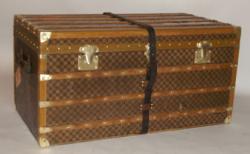
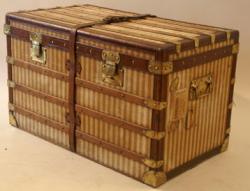
Cabin Trunk
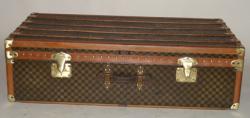
35cm high in order to be slipped under the cabin bed in liners.
Trunk for shirts
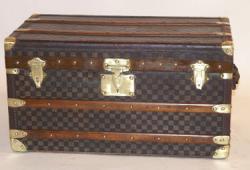
Car External trunk
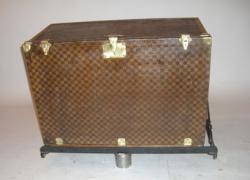
Leather suitcase
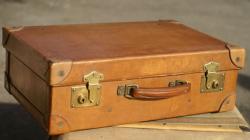
As you can see, we do not have, up to now, a Moynat wardrobe trunk…
You have a model of that brand? We are willing to buy, contact us!
Contact
Email
info@la-malle-en-coin.com
Phone
+33 (0)3 88 93 28 23


